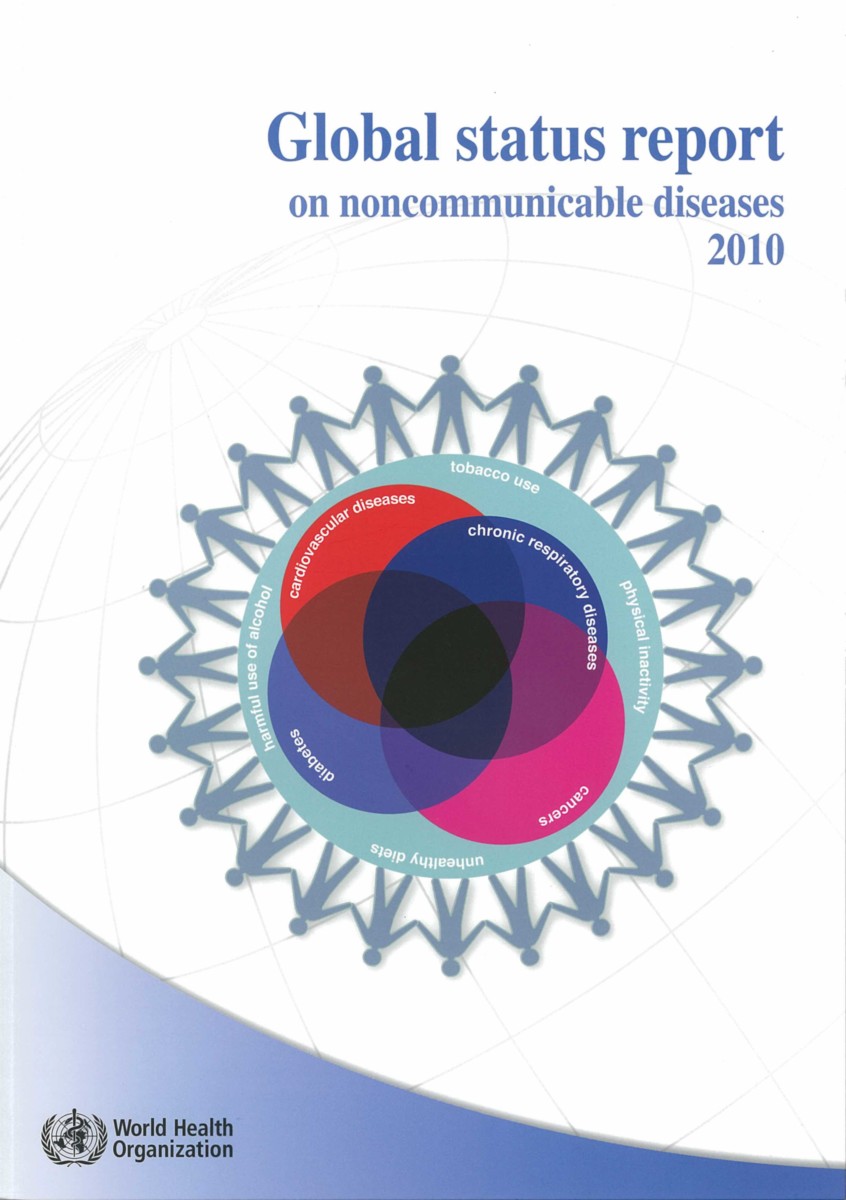Global Status Report on Noncommunicable Diseases 2010
- Publisher
World Health Organization - Published
1st November 2011 - ISBN 9789241564229
- Language English
- Pages 162 pp.
- Size 8.25" x 10.5"
The Global Status Report on Noncommunicable Diseases is the first report on the worldwide epidemic of cardiovascular diseases, cancer, diabetes and chronic respiratory diseases, along with their risk factors and determinants. Noncommunicable diseases killed 36 million people in 2008, and a large proportion of these deaths occurred before the age of 60, so during the most productive period of life. The magnitude of these diseases continues to rise, especially in low- and middle-income countries.
This report reviews the current status of noncommunicable diseases and provides a roadmap for reversing the epidemic by strengthening national and global monitoring and surveillance, scaling up the implementation of evidence-based measures to reduce risk factors like tobacco use, unhealthy diet, physical inactivity and harmful alcohol use, and improving access to cost-effective healthcare interventions to prevent complications, disabilities and premature death. This report, and subsequent editions, also provide a baseline for future monitoring of trends and for assessing the progress Member States are making to address the epidemic.
The Global Status Report on Noncommunicable Diseases was developed as part of the implementation of the 2008-2013 Action Plan for the Global Strategy for the Prevention and Control of Noncommunicable Diseases, which was endorsed by the World Health Assembly in 2008.
Executive summary
1. Burden: mortality, morbidity and risk factors
2. NCDs and development
3. Monitoring NCDs and their risk factors: a framework for surveillance
4. Reducing risks and preventing disease: population-wide interventions
5. Improving health care: individual interventions
6. Tackling NCDs: the capacity of countries to respond
7. The way forward: taking action based on evidence and lessons learnt
Annex 1. Methods used for country estimates in Chapter 1 and Annex 4
Annex 2. List of countries by WHO Regions and 2008 World Bank Income Groups
Annex 3. Maps showing the global distribution of estimated NCD-related mortality and selected risk factors
Annex 4. Country estimates of NCD mortality and selected risk factors, 2008
• NCD mortality: 2008 comparable estimates
of NCD mortality (total NCD Deaths in 000s; % of NCD Deaths occuring under the age of 70; and age-standardized death rate for NCDs per 100 000)
• Tobacco: 2008 comparable estimates of prevalence of current daily tobacco smoking and current daily cigarette smoking
• Physical inactivity: 2008 comparable estimates of prevalence of insufficient physical activity
• Alcohol: 2008 comparable projected estimates of adult per capita consumption in litres of pure alcohol
• Raised blood pressure: 2008 comparable estimates of prevalence of raised blood pressure
• Raised blood glucose: 2008 comparable estimates of prevalence of raised blood glucose
• Overweight and obesity: 2008 comparable estimates of prevalence of overweight and obesity
• Raised total cholesterol: 2008 comparable estimates of prevalence of raised total cholesterol
Annex 5. Core indicators for consideration as part of the framework for NCD surveillance
Annex 6. Recommended approaches to implementing effective and sustainable multisectoral action on health
World Health Organization
World Health Organization is a Specialized Agency of the United Nations, charged to act as the world's directing and coordinating authority on questions of human health. It is responsible for providing leadership on global health matters, shaping the health research agenda, setting norms and standards, articulating evidence-based policy options, providing technical support to countries, and monitoring and assessing health trends.


